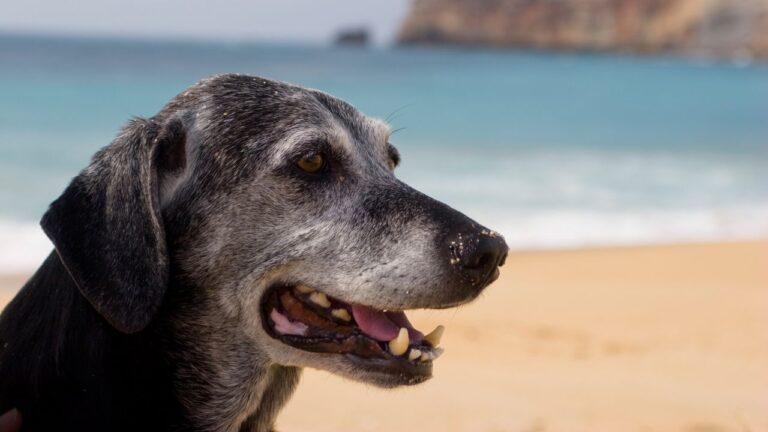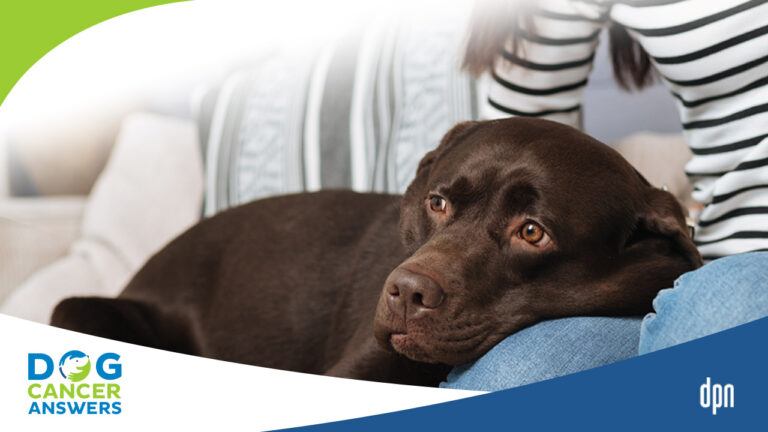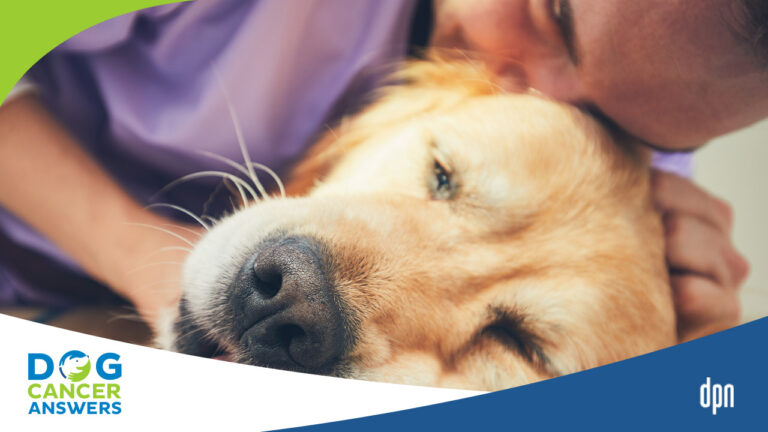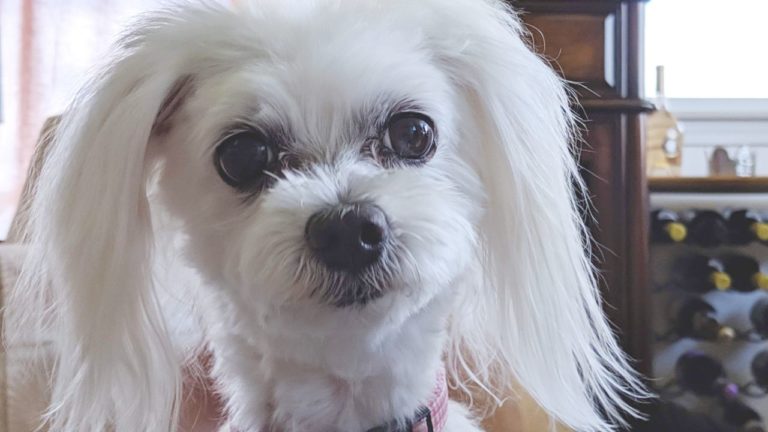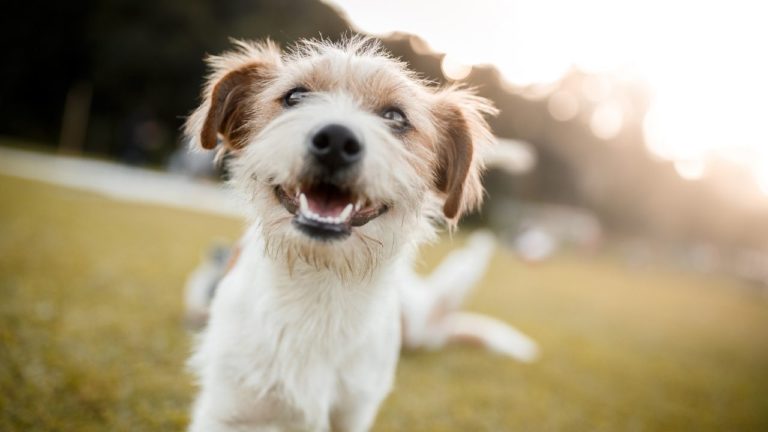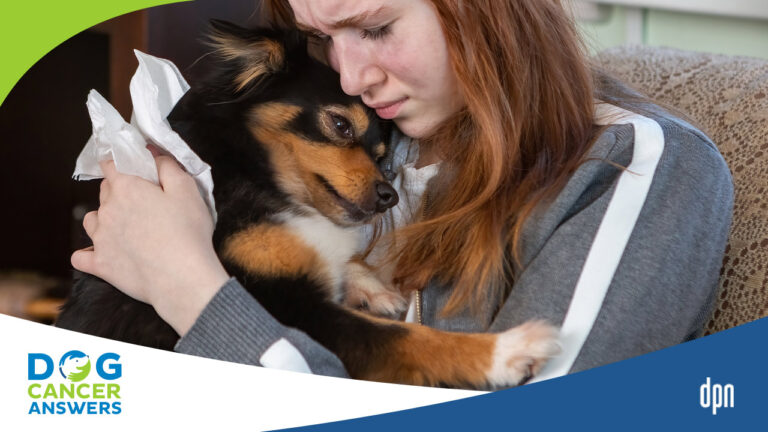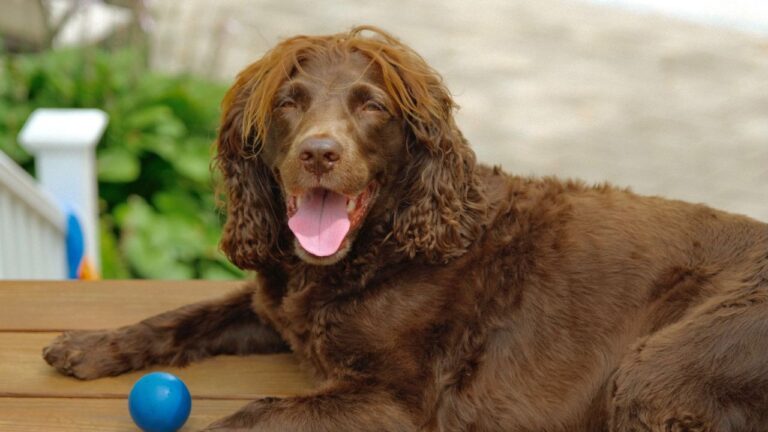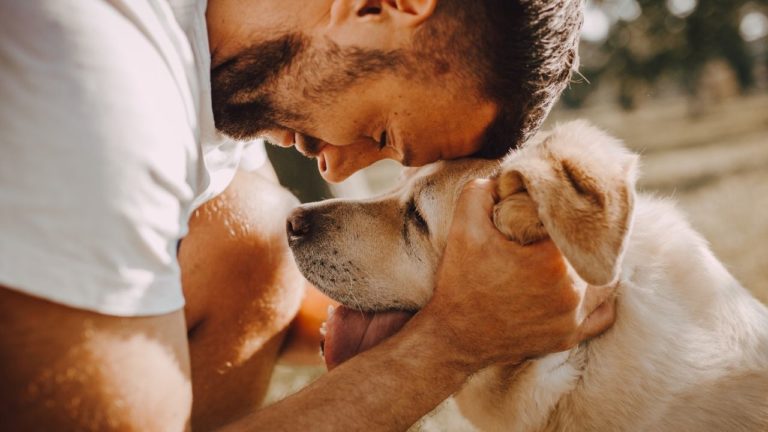Warning Signs Dog Is Dying: How to Know You’re Near the End
Every weird breath, every stumble, every nap that lasts too long worries you. Is your dog dying right this minute?? How will you know when it's time? Learn the signs that the end is near and what to do about it.
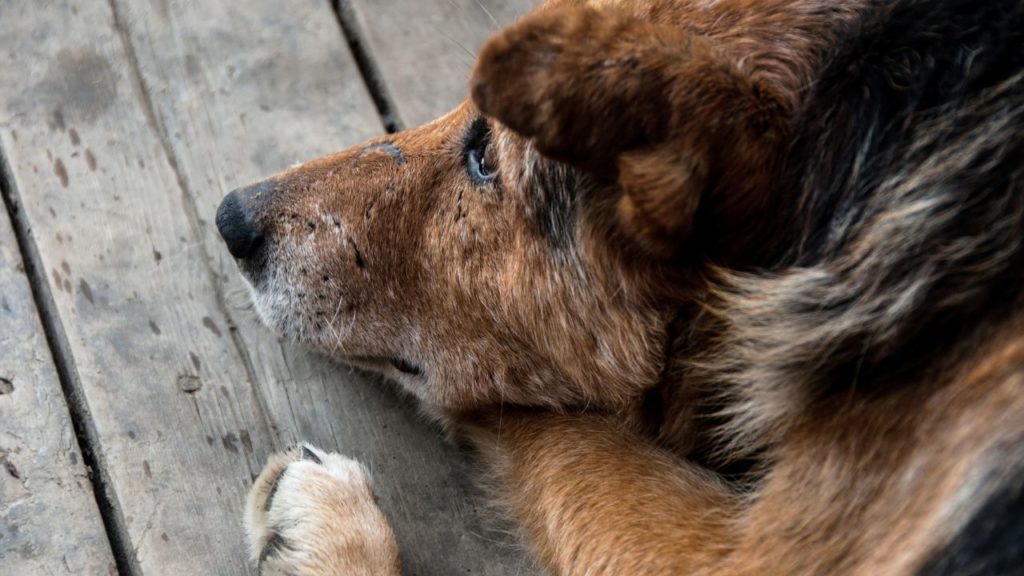
Read Time: 14 minutes
If you’re reading this article, you’re probably worried that your dog is dying. You may even have literally searched for “warning signs dog dying.” As editor of The Dog Cancer Survival Guide, I wanted to write this, just for you. Here’s what I need you to know, right upfront, right now:
- There is no expiration date for your dog. There is no such thing as a crystal ball we can consult to know “today’s the day.” No one, not your veterinarian, not your spouse, and not you, can predict with 100% accuracy “when” your dog will pass from this earth.
- There are some warning signs that you can use to see the end as it nears.
- There are some wonderful, simple things you can do for your dog RIGHT NOW that will help, no matter when the end comes.
- This is a very, very hard time for you, and you should be very gentle and kind to yourself.
Before we launch in, let me tell you this: I am not a veterinarian. I am a writer, and the editor of the best-selling book on dog cancer, The Dog Cancer Survival Guide, but I have no medical credentials of my own. What I include in this article is what I know from Dr. Demian Dressler and his co-author, oncologist Dr. Susan Ettinger … but mostly from my own experience as a dog lover, just like you, who has gone through the dark nights of agony at the end of a beloved dog’s life.
With that disclaimer, let’s move on.
There’s No Expiration Date
Readers of Dr. Dressler’s book on dog cancer often join our private Facebook support group to get support for their dog cancer journey. Far too often, a reader posts a photo of their gorgeous dog and asks “how do I know when it’s time to let go?”
And the advice from fellow guardians (what we call dog lovers facing canine cancer) is almost always summed up this way:
“You can’t know ahead of time … but when it is finally time, you will absolutely know. Your dog will tell you.”
This idea that our dogs will “tell” us may sound a little obvious (or mystical, depending upon how seriously you take interspecies communication studies). But it’s not.
We often have to be reminded that our dogs actually have opinions, thoughts, feelings, and preferences. They are not human, but they are, in a very important sense, people. I’m not making this up! This is a relatively new way of thinking about animals, but it’s becoming clearer with every passing year: this planet is populated by over 7 billion human individuals, and thousands of billions more of individual animals.
Dogs are not just members of a species called Canis lupus familiaris… in fact, they are individuals who happen to be part of that species. Just like all of us humans are individuals who happen to be part of our species, Homo sapiens.
Dogs have a sense of themselves as individuals. They don’t look at another dog and think “hey, we’re interchangeable!”
Listen to Your Dog
Because dogs don’t speak “English” (although they understand a lot of it), and because we don’t speak “Canine,” we often forget that our dog IS a person. He has his own unique view on his world. She has her own set of experiences — experiences that you will never actually know about. Because you haven’t been her, and you haven’t lived his life!
My point is, it’s easy to forget in our distraction and panic over our dog’s warning signs that they are feeling ill, or maybe even dying, that they are actually having their own experience — that is separate from ours.
And when we forget that about other people (whether human or dog) … we forget that we need to LISTEN. Just as we would to someone in our life who does speak our language. If your grandfather told you “I think I’m near the end,” you would understand what he meant.
Well, dogs might be able to “tell” us something like that, too. And I believe our dogs, like our grandfathers, want to keep their dignity.
So, when I say “Your dog will tell you,” another way I could say this is “ask your dog.”
Your dog knows what is going on. And I bet you anything you can understand your dog.
Look, there isn’t any way to know the exact timing of anyone’s death, human or canine. But there is great value in listening to someone, closely observing them, and providing comfort, whether they are near death, or not.
And our dogs certainly deserve that close, loving attention, at all times in their lives. Goodness knows, I wish I were even a fraction as good as my dogs. I would be a saint.
So, bottom line is this: set aside your need to “know” if now is the time for your dog. It’s just not possible to know for sure — until you do.
When it’s time, you will know, because your dog will somehow, someway, get through to you to tell you. In the meantime, the best thing you can do for yourself AND your dog is to listen, observe, and offer comfort and help as needed. How much time you have left is less important than how much closeness and love you give each other in whatever time you have left.
(I speak from hard, hard experience.)
Warning Signs a Dog Is Dying
OK, here are some things that you can look for to see if your dog is nearing the end of life. Keep in mind that none of these are definitive, and if your dog is only going through one or two of them, it may not mean she’s near the end. I have heard from too many readers over the years about turnarounds to think that any one of the following signs definitely means your dog is going for sure.
But if you see several of the following warning signs, all at the same time? Breathe deeply. We’ll cover some more things for you to do in the next section.
Lethargy That Just Won’t Quit
In general, dogs like to move, walk, play, bounce, cuddle, fetch, eat, drink, and relieve themselves. Any time your dog is listless or lethargic … not “acting like himself” you can be sure he’s not feeling well for some reason.
In particular, lying in one spot for long periods of time, especially one that is kind of quiet and isolated, or not a normal napping spot, is a sign that your pup is feeling like life is not something he wants to participate in wholeheartedly. Those of us who live in rural areas, where our dogs have lots of outside spaces to roam, are familiar with how, given a chance, some dogs prefer to isolate themselves, far from their families, when they sense their time is up. I had a friend whose elderly dog seemed fine right up until the night she didn’t come in when called after they let her out after dinner. They found her curled up under a bush in an area she almost never napped in — as if she didn’t want to ruin their happy memories of other trees, paths, and walks.
If you live in a city or suburb, and your dog doesn’t have an outside option, you might find he chooses a weird spot you’ve never seen him use for a nap. Another friend’s dog curled up in their laundry room for his last days. It only made sense when she realized how it was out of the way, out of traffic, and afforded him maximum privacy from his beloved small human family members in their busy house.
If a dog is near the end, they may not want to get up from their spot, even for their most favoritest, favoritest things, like toys, treats, and offers to go for a walk. They might not even seem happy to see family members. If your dog has been sort of puddling up in a pile of lethargic, disinterested misery, and it’s been more than a day, that can be an early warning sign that she is getting ready to leave this life.
Lack of Interest in Food and/or Water
It’s the rare dog that doesn’t want to eat. Sometimes, nausea from cancer treatments (or cancer itself) can be the culprit. Other health conditions, medications, and even foods can certainly cause temporary nausea, too. Here’s one of my favorite articles about how to help your dog to eat when she won’t.
But if you’ve gone through all of that, and even started offering other tidbits that might be no-no’s on a typical cancer diet, and he still won’t eat? Or if he does, but then vomits? That’s a warning sign.
If your dog stops drinking water, that’s another sign that she is possibly nearing the end. At the end of life, our organs start shutting down, and as a result, the brain just stops sending us hunger and thirst signals. There’s no point in taking in food and water that can’t be digested and then used by the body.
So, if you’ve tried and failed to get your dog to take an interest in food and water, and it’s been over a day or two, it might be because he’s near the end.
Movement Problems
Dogs that are near the end of their life often become very disoriented, so if your dog does get up and move around, she may stumble, wobble, or collapse. You may find him shaking, or even having what looks like a seizure, as his muscles tremble and discharge energy.
Losing Control of Bowels and/or Incontinence
A dog who is dying often loses control of their muscles (as above), including all the sphincter muscles that hold waste in the intestines, or urine in the bladder. Combine that loss of control with the inability to move with confidence and general lethargy, and you see incontinence. Often, you’ll find your dog has soiled himself without even attempting to get up — urinating and/or defecating right where he’s lying. You might also see sores from the waste irritating the skin.
Labored Breathing
At the very end of life, breathing often becomes ragged. Instead of a nice, even in-and-out, you might hear great breaths in, and then a long pause, and a little sigh out. There might be panting, or great pauses, or almost a rattling sound as your pup struggles to keep going.
Super Snuggliness
I have a theory that most dogs absolutely know that they are dying, and they want to make the most of their last moments. Before you point out that I just told you about dogs isolating themselves to die, let me tell you this: both of those dogs actually spent the hours BEFORE they isolated themselves to pass asking for kisses and pets and snuggles from their human family members.
As far as I can tell, dogs love unconditionally, even those of us humans who maybe don’t deserve it. And so it makes 100% sense to me, as a dog lover, that my dogs all got really snuggly at some point near the very end of their lives. They want to make absolutely sure that you know that you are loved before they are forced to leave you.
If your dog is spending lots of time gazing at you with adoration, snuggling into your lap, or doing his best to request a belly rub given his limited movements, you might see that as a warning sign.
What You Can Do for Your Dog If You Think She’s Dying
First, make sure that’s what is going on. Calling your veterinarian and telling him or her all about everything you’ve observed is your first priority. You will want to know if a recent change in medication or technique could have caused these symptoms — and if so, there might be something they can do for her to get her through this period so she can recover.
Before you call in, make a list of everything you’ve seen and heard, and your general impressions of your dog, so you don’t forget anything. The nurse or tech who answers the phone can help you, or have the veterinarian call you back and discuss.
Getting medical advice at this stage is really important. If there is something that can be done, they’ll advise you about what it is, and what the chances of it helping are. And if not, they might still be helpful — sometimes an overnight stay at the hospital can help both with pain management and hospice care, if that’s necessary.
But then, there are definitely things you can do at home to help your dog. These all can help to alleviate pain and really up the quality of life he’s feeling right now. For more detail on each of these, please see the chapter of “End of Life Choices and Care” in The Dog Cancer Survival Guide.
Hydration
For dehydration, aim to get about one ounce of water per pound of body weight into your dog over a 24-hour period. For example, if your dog is 10 pounds, you want to give about 10 ounces of water.
If he won’t drink out of a bowl, you can try squirting a turkey baster filled with water into his mouth. You can also use other fluids, like low-sodium chicken or beef broth, soup, or even tea. But if he refuses to drink, or hates the baster method, there’s not a lot you can do to force the issue.
In this case, ask your veterinarian for “subcutaneous fluids” to give at home, along with detailed instructions about how to inject them under the skin.
Appetite
If your pup hasn’t eaten in over a day, and you’ve done everything you can think of, throw out all the rules you’ve learned about what to feed a dog with cancer.
High-carb? Fine! Hot dog packed with nitrates and nitrites? Terrific! If your dog hasn’t eaten in a few days, ANYTHING she eats is lovely.
Offer anything that isn’t toxic (no onions, grapes, raisins, chocolate). Anything that tempts her to take a bite is PERFECT, and an important life quality “treatment.” Our dog Maui, when she was dying, loved angel food cake. (And we loved feeding it to her.)
Safety
If your dog is really wobbly, try to keep him in a quiet, comfortable place that is safe. Remove any furniture or objects that he might knock over, and pad hard surfaces anyway you can.
Cleanliness
Cleanliness is really important to your dog, as it is to us humans. So if she’s soiling herself, give her a gentle sponge bath with lukewarm (not cold, not really warm, certainly not hot) water as soon as you can. Keeping her clean and dry will help her to feel comfortable and keep her from developing bed sores.
Bed Sores
Lying in one spot can cause bed sores, little ulcers where skin is rubbed raw from the pressure of the body. This is particularly important for large breeds.
Keeping your pup on a thickly padded surface and rotating him gently from side to side is a good idea. While you do this, gently look for sores that are developing so you can care for them right away if you see them.
Also, keep in mind that you don’t want to “twist” your dog as you move him. If he hasn’t turned himself over in a six-hour period, gently gather all four of his paws to his belly, roll him to his front, and then on to his other side. (Don’t roll him onto his back — it’s dangerous, especially to large breed dogs, who are prone to get a “twisted stomach” this way.)
Pain Management
Pain management might be in order, particularly if you notice panting, a possible sign of pain. There are many pain meds your veterinarian might want to prescribe, based on your dog’s specific case, so don’t be afraid to ask.
This is also a time when something like CBD oil might be warranted, for comfort at the end of life. Discuss this with your veterinarian, if you’re interested, because laws vary by state, and not every veterinarian is comfortable prescribing or using something that is still illegal at the federal level. (And I refuse to get on my soapbox about this, but let’s just say I wish scientists had the opportunity to study this.)
Life Quality!
Focus on total, 100%, super-awesome life quality tailored to YOUR dog.
You know your dog best — what does she like? Is there a favorite toy you can get for her to snuggle with or gnaw on? Is there a special treat? Does she adore fresh air?
When our dog Maui was in her last days, I bought a pack ‘n play for her, filled it with her favorite dog bed, toys, and snugglies, and put it outside in a shady spot. We also carried her in our arms and gently walked up and down her favorite beach. I can’t prove it, but I know it’s true: being outside and feeling the sunshine and fresh air, and smelling her favorite beachy smells, made her happier.
So did getting groomed. The day before Maui died, our mobile groomer appeared at the door. It was an appointment we’d made a month earlier, and forgotten to cancel as we took care of Maui in her last days. We assumed Maui wouldn’t want to make the effort to get up and get groomed, but when she heard Allyson’s voice, her tail thumped and she raised her head, and she even walked to the top of the steps to greet her. When we listened carefully and observed her obvious positive response to Allyson, we “knew” she wanted to get groomed. Allyson’s tender care for her in her last hours was a miracle. Maui always loved being groomed, and it truly ended up being one of the “life quality treatments” we applied at the end of her life.
Manage Your Grief
OK, this one is hard, but it’s really important. While you care for your dog at this last stage of his life, try hard not to break down in front of him. Dogs pick up on our emotions, and whatever you are feeling he is likely feeling, too. So try to stay in a warm, loving, attentive, close, intimate frame of mind. Leave the harsh, ugly crying for later, or go somewhere else to do it.
It’s a terrible burden, to watch a loved one die. It can be really hard, and for some, it’s totally devastating. But if you can keep breathing, and keep your heart open to how much love there is between you and your dog, you’ll be doing a deep and great service to your pup.
And somehow, I know he’ll be grateful to you.
Which brings me to the last thing I wanted to tell you.
Be Gentle, and Loving, with Yourself, Too.
Good grief, it’s hard to lose a dog. And maybe even harder is knowing you’re about to lose your dog — that it’s going to happen soon, but who knows when. That limbo feeling can complicate our decision making and terrorize our minds. We might not feel right about eating ourselves, or sleeping, or going to work, or even taking a shower.
So acknowledge to yourself that you’re going through a really tough time, and that YOU need care, too. One thing I’ve learned over the years is that no amount of money, time, or energy can insulate us from heartbreak. Whether you are in a situation where you can’t afford pain meds, or need to euthanize, or can’t afford to miss work to be with your dogs — or whether you have all the time and money you need — you’re going through a devastating loss.
So do what you need to do to care for yourself, too. Get support. Talk to friends and family members, or a pastor or counselor. I personally advise NOT talking to people who aren’t dog lovers — some folks simply do not understand the bond that can form between us and our dogs. The last thing you need to hear right now is “it’s just a dog.”
Dog lovers who do understand, however, are invaluable. Having fellow travelers take a moment or two to post messages of love and support can be very healing. They can also be really helpful at “trouble-shooting” your end of life care for your dog.
In addition to reaching out for emotional support, I also recommend a few time-tested comfort measures. The following came highly recommended by my grandmothers and grandfathers, and my great-grandmothers and great-grandfathers (I am so lucky to have known so many!):
- Get as much sleep as possible. Now is not the time to pull all-nighters if you don’t have to. Go to bed when you are tired, and if you can nap, do it.
- Make sure YOU are eating and drinking. Your dog does not benefit from you being weak and hangry.
- Take a shower. Everything seems more manageable when you are fresh and clean.
- Take care with your dress and grooming. My grammy used to say “I wear lipstick because I feel better.” You don’t have to wear lipstick, but sometimes feeling “dressed” — whatever that means to you — helps you to face the world.
- Breathe deeply. Constantly. When stressed, we often hold our breath, which just keeps our brains from working well. Better to add breath to any stressful situation than take it away.
- Have tea. Any kind is comforting, but herbal teas, in particular, can be very therapeutic.
- If you have a diffuser, diffusing lavender essential oil can be really helpful to both you and your dog. It’s an uplifting, calming, and relaxing scent.
- Eat soups. They are warm and comforting, and broth can be very nutritious, and quickly absorbed, so you get “instant” food.
- Cry when you need to. Give yourself breaks to let out your grief, at least a little. It helps to rid the body of stress hormones.
- Dark chocolate is a great way to reduce stress hormones and “treat” yourself. (My grandmothers all thought so — now science backs them up!)
I’m going to give the last word to one of the wise readers who contributed a “true tail” to The Dog Cancer Survival Guide. Here are some words of wisdom from someone who’s been where you are:
“Deal with it one day/ step at a time, and don’t jump ahead. Let outcomes unfold, rather than focusing on the worst case scenario. Don’t beat up on yourself.You did not cause your dog’s cancer. Don’t try to be brave. If you need to cry or do hours of research or watch action movies to feel better, go for it. If not, just love your dog. Don’t waste any energy on things you can’t do anything about. Use your energy to help your dog. Have courage when making the decisions you will have to for your dog’s well-being. Some will be hard, but if you keep the focus on giving your dog the best quality of life possible, they will be easier.”
– Susan McKay,Winnipeg, Manitoba
I don’t know you, but I feel your pain if you are reading this. I wish you the very best, and thank you for loving your dog so much that you ended up here, reading this article.
Warm Aloha,
Molly
Editorial Note: This post was originally published on a retired blog about dog cancer.
Hart A. Is personality unique to humans? BBC News. https://www.bbc.com/news/science-environment-30395493. Published December 10, 2014. Accessed November 11, 2022.
Harlan B. Picturing a world where animals are seen as individuals. Photography. https://www.nationalgeographic.com/photography/article/picturing-a-world-where-animals-are-seen-as-individuals. Published May 3, 2021. Accessed November 11, 2022.
Molly Jacobson
Topics
Did You Find This Helpful? Share It with Your Pack!
Use the buttons to share what you learned on social media, download a PDF, print this out, or email it to your veterinarian.


